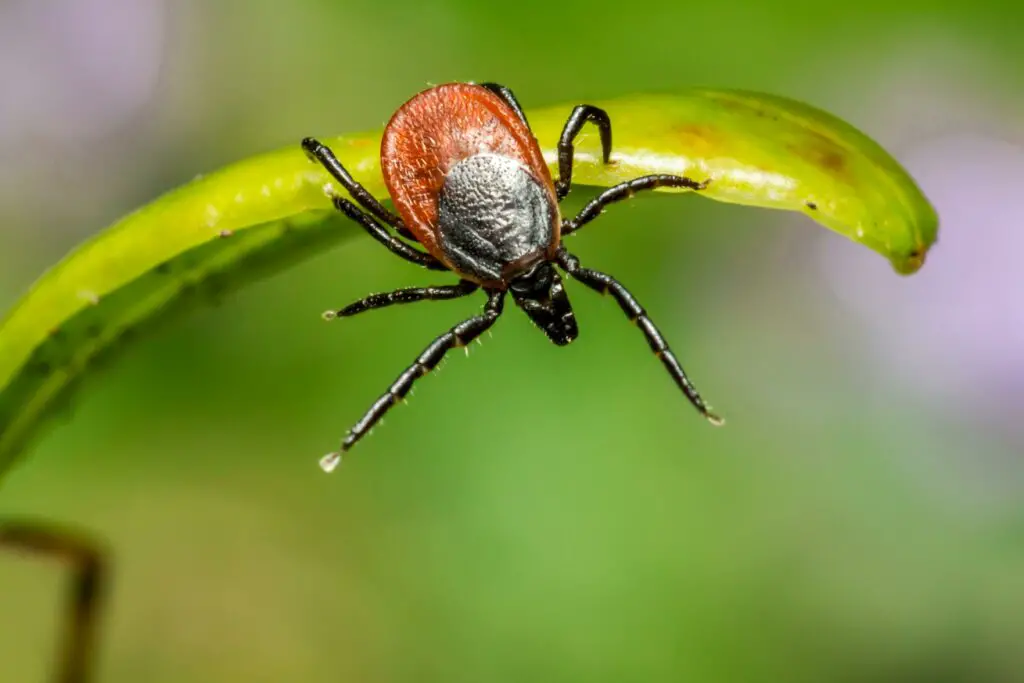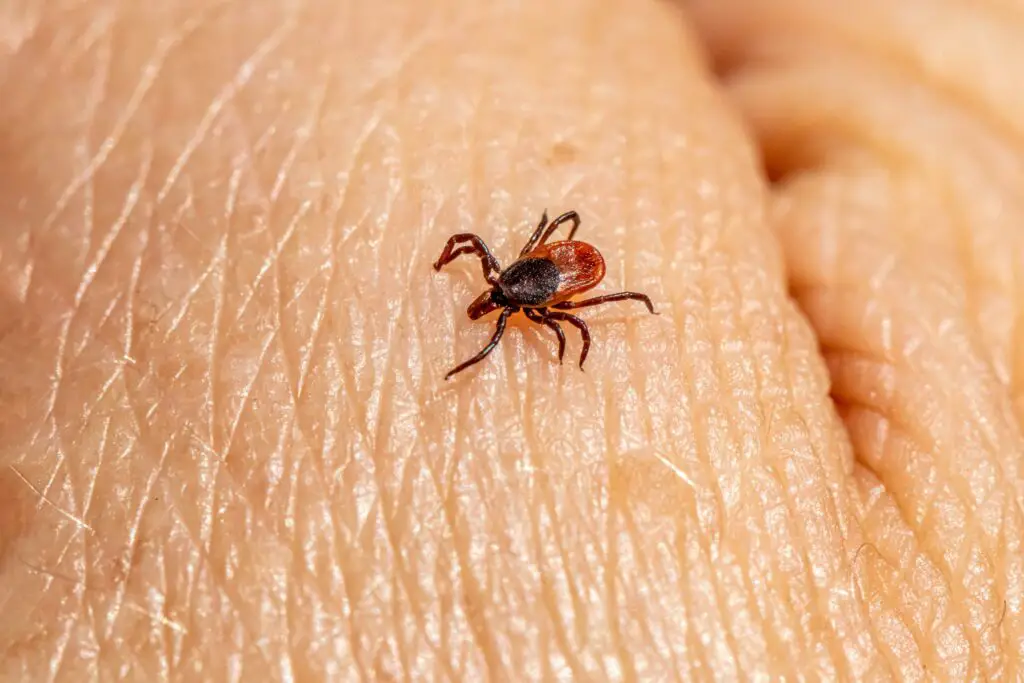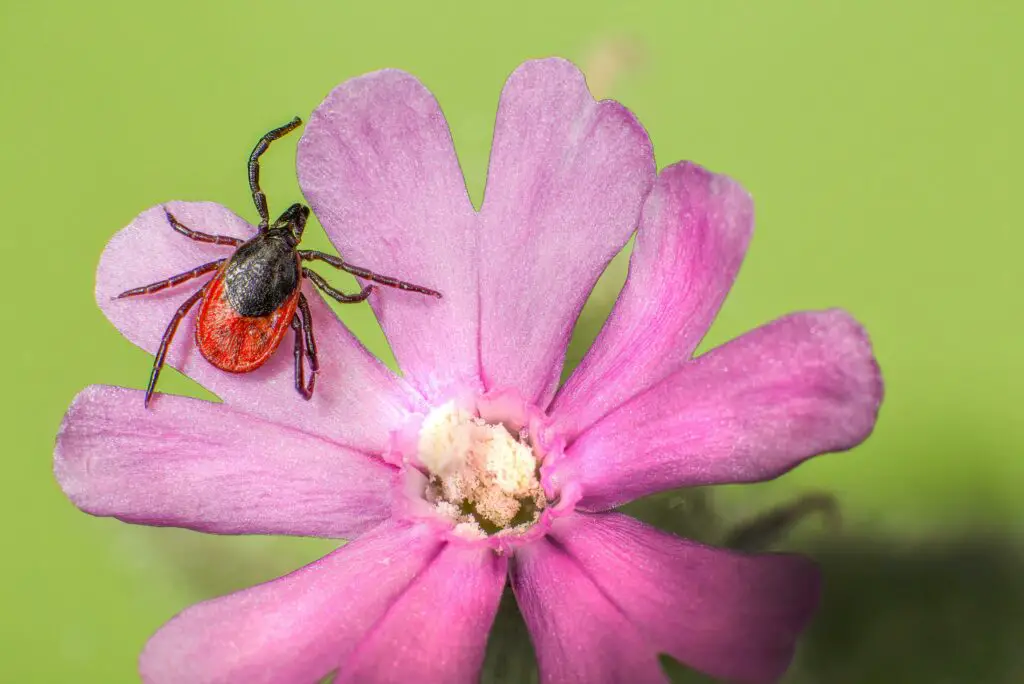Nature is the home to an incredibly versatile array of species, but ticks are definitely one of those that we tend to avoid at all costs.
These tiny arachnids, that are related to spiders, mites, and scorpions, are in fact parasites that survive by attaching themselves to larger animals and feeding on their blood. Humans aren’t spared either. Sadly, these insects carry harmful bacteria that can spread disease to people.
Sadly, tick-borne diseases are at an all-time high, with about 50,000 cases reported each year, and far more going unreported.

There are different types of ticks, and unfortunately, they sometimes find their way to people’s homes. The types most commonly found in homes are the black-legged tick, the dog tick, and the brown dog tick.
- Black-legged Ticks – known as deer ticks, these ticks are typically brown or black in color and have a flattened, oval-shaped body. They are commonly found in wooded areas and can transmit Lyme disease.
- Dog Ticks are larger and can range in color from brown to reddish-brown. They have a tough, shield-shaped body. Dog ticks can transmit diseases such as Rocky Mountain spotted fever.
- Brown Dog Ticks are brown in color and have a slender body.
Although the tick season is between March and October, or sometimes longer, we should be wary of this insects all year round. In fact,if beaten by a tick, a person can develop symptoms even after two or three months.

The bite itself isn’t painful and can cause swelling, itchiness, blistering, and bruising. The bad thing is that ticks also carry and transmit severe diseases, most commonly Lyme disease, as well as Rocky Mountain spotted fever, ehrlichiosis, and babesiosis.
Initially, Lyme disease develops as a circular red ‘bull’s eye’ rash around the site of a tick bite. However, not everyone gets a rash and you should also watch out for a flu-like illness with fever, headache, tiredness and general aches and pains.
The best way to prevent being bitten by a tick is to avoid tall grasses and areas where ticks thrive (such as moorlands and woodlands), especially during the warmer months.
In case you do get bitten, you should remove the tick as soon as possible in order to prevent infections.

These are some of the ways of safe removal.
- Use fine-tipped tweezers: Use clean, fine-tipped tweezers to grasp the tick as close to the skin as possible.
- Pull gently: Apply steady upward pressure, being careful not to squeeze or crush the tick. Aim to remove the tick in one smooth motion without twisting or jerking. Twisting or jerking can cause the tick’s head to break off and stay inside the skin, where it can still transmit disease.
- Clean the area: After removing the tick, clean the affected area with soap and water or an antiseptic solution. Monitor the site of the bite for any signs of infection or a rash, and consult a healthcare professional if necessary.

If by any chance ticks find their way into your home, take immediate action in order to prevent infestation. Most times, ticks are brought into your home in case they stick on your clothes or onto your pets.
- Isolate the area: If you have identified the presence of ticks in a specific area, keep pets and children away from that space.
- Wear protective gear: Put on gloves and a long-sleeved shirt to protect yourself from potential tick bites.
- Clean the area: Clean the area where you found the tick. If it is in bedding, wash the sheets. Inspect the area to ensure there are no more ticks that are present. Dispose of the tick by either flushing it down the toilet or sealing it in a container or ziplock bag before placing it in the trash.
Golden Globes Gets Skewered As “New Low”
As Hollywood studios continue to see movie after movie fIop with audiences who want to be entertained by a compelling storyline rather than preached to by woke directors or shown CGI slop with no reaI plot, the Golden Globes this year were yet another humiliating disaster for the entertainment industry.

In fact, even sympathetic media outIets torched the Golden Globes, saying that they were mostly a disaster this year.
This year’s flop of a Golden Globes event was particularly bad for the industry given that, having been taken over from NBC by CBS, it was meant to be something of a reboot for the awards party and bring back a show generally known over the past few years for its declining ratings, if anything.
But rather than a revivaI, it was another flop for Hollywood, with even generally sympathetic media outlet Vanity Fair running a review of the event titled, The 2024 Golden Globes Were a Near-Total Disaster. Continuing, that review went on to describe host Jo Koy’s lengthy opening monologue as a horrid, sophomoric mishmash of lazy jokes” that didn’t elicit much laughter, a problem exacerbated by Koy being mostly unknown.
Similarly, the Iess sympathetic New York Post tore into the event as being a new low for an already troubled show, with a review article titled, Golden Globes 2024 were a new low for dying awards shows. Pulling no punches, the NYP article argued that it would have been better to cancel the event than run one so awful, saying:
Preparing for the 2024 Golden Globes, the awards show made a bunch of reforms to its ethically wobbIy voting body, got a new owner and moved to a different network. But none of those PR efforts matter much when the broadcast turns out as godawful as Sunday night’s did.
If only we’d 100% canceled the Globes when we had the chance.
Conservatives on X were simiIarly harsh. Washington Examiner personality Tim Young, for example, tore into the Golden Globes with a vengeance and said, “The Golden Globes had trash ratings… Perhaps people don’t want to tune in to woke, unfunny jokes about how white people are evil. Maybe their host should lecture at Harvard… I’m sure he’d be a hit there.”
Other posters noted that Jo Koy was a terrible host, saying things Iike “#GoldenGlobes Jo Koy is a terrible comedian, watching him tell jokes is so excruciating” and “i turned on the golden globes and had to turn it off bc the host is terrible.”



Leave a Reply